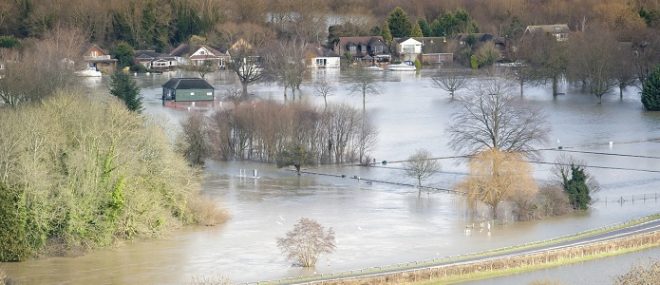Defensive driving is driving to prevent incidents regardless of the driving conditions, actions of others, and hazards on the road. Defensive driving techniques involve anticipating and reacting to situations that may cause a collision. This could include reacting to another driver, pedestrian, or road obstruction that could cause an incident.
A defensive driver is constantly aware of their surroundings and is always on guard to respond to the situation. There are many defensive driver programs available through private organizations.
Creating a defensive driving culture in your organization can help achieve the best results in collision prevention, efficiency, and profitability.
How can I be a defensive driver?
A defensive driver is prepared to react to various hazards while driving. To help predict the outcome of a driving situation and prevent a collision, you can apply the steps below:
- Recognize the hazard.
- Understand the defence.
- Act in time.
Recognize the hazard
Recognizing a hazard involves several steps: knowing what the hazards are, anticipating or predicting the hazards, and visually seeing them.
How’s the weather outside? Will the weather affect the roads you’re travelling on? Is your vehicle in working order? All these questions begin the process of understanding what hazards may be present while driving and should be asked prior to entering the vehicle.
Anticipating hazards involves spotting possible hazards and understanding what they are. To spot hazards look well ahead of your vehicle, check mirrors from side to side, and repeat this process as you’re driving.
Understand the defense
Once a hazard is identified, you have three options to defend against it:
- Brake
- Slowing down is the primary response to any hazard. Reducing speed is a good way to avoid a collision or minimize the impact.
- Steer
- Steering appropriately to avoid the hazard, such as an oncoming vehicle in your lane, is the next defence against collisions.
- Communicate your presence
- Sounding your horn is the primary way to communicate your presence to prevent a collision. To help avoid incidents, you should also use signals to let other road users know what your intentions are.
Act in time
When you recognize the hazard and understand the defence, all that is left is for you to act appropriately. You may be wondering, what possible hazards should I look out for? Besides other drivers, pedestrians, and road obstructions here are a few to consider:
Driving at night
Your vision is reduced at night. Slowing down can help prevent an incident. Headlights can illuminate part of the roadway, but it is important to manage your speed to keep your stopping distance within your sight distance. Keeping your headlights clean and properly adjusted is important. Use high beams when appropriate and try to limit the use of interior lights.
Adverse weather
Traction is compromised with rain, sleet, and snow. Reducing speed, increasing following distance, and properly using wipers and defrosters can all assist the driver.
Heavy rain, snow, and fog will impair your visibility. Avoid driving in these conditions as much as possible. Bridges and overpasses are susceptible to icing before the roadway freezes. Melting ice is more slippery than ice that is not wet. Reducing speed is a good defensive technique for icy conditions.
Traffic
Adequate following distance is crucial in avoiding rear-end collisions. Allow a four-second interval between you and the vehicle ahead. This will give you more time to use defensive driving techniques if needed. Allow faster vehicles to pass in the left lane. Shoulder check when making lane changes and right-hand turns to check your blind spot.
Look well ahead to see hazards that occur. Complete checks on both of your mirrors; and repeat this process constantly. You should check all mirrors frequently and try not to focus on one spot for more than a couple of seconds to avoid staring.
Communicating your presence and intentions is vital to letting other drivers and road users know what you are going to do. Headlights, hazard lights, signal lights, brake lights, and horns allow you to communicate. Communicate early to allow others to react in time.
Your vehicle’s condition
An inspection can help identify maintenance issues with your vehicle. Particular attention should be given to tires and brakes. Regular maintenance should be performed on your vehicle to ensure that mechanical breakdown does not occur.
Tire pressure is the most important factor in keeping your vehicle on the road. Over or under-inflated tires reduce stability, traction, and fuel efficiency. Check your user manual for the proper tire pressure for your vehicle and ensure this pressure is always maintained.
Driver’s condition
Most incidents are caused by driver error. Alcohol and drugs have an obvious effect on a driver’s mental state, but fatigue and distractions also affect the driver’s ability to concentrate on driving. Some things your company could include in its safety program are:
- Implement a zero tolerance of alcohol and drugs
- Limit driving shifts to combat fatigue
- Educate employees on the effects of fatigue on their driving
- Implement policies on using handheld devices and radio controls to help deal with distractions
When is there a greater risk for collisions?
- Intersections and turning
- Vehicles crossing paths, pedestrians using the roadway, distractions, and false assumptions can all contribute to incidents. As a defensive driver, you need to know the right-of-way rules but never assume that you have it. Always be alert to what others are doing and be prepared to yield the right of way.
- Stopping
- Stopping collisions can occur if one is not adhering to the correct following distance and/or failing to stop at all mandatory stops. Therefore, allowing adequate distance between yourself and the vehicle in front of you can help provide enough time to react and avoid collisions.
- High-risk behaviour
- This includes tailgating, running yellow lights, aggressive driving, and distracted driving. It is important that you and your drivers remain focused on driving. Creating a culture of defensive driving and stressing its importance as part of the job can provide the necessary guidance to avoid incidents. Also, ensure your company has a policy on handheld device use while driving.
- Emergency situations
- Emergency situations require you to react very quickly. An oncoming vehicle approaching in your lane or a vehicle darting into your path from a blind intersection are examples of emergency situations. Defensive driving can help drivers be aware of these hazards, and ready to react. Utilizing proper eye lead-time, anticipating hazards, and responding appropriately will help you avoid incidents.
Ensure that you’re protected
Despite your best efforts, sometimes things can still go wrong. That’s when insurance can be helpful. To learn more about how a tailored policy can help protect you, your employees, and your bottom line, visit our Transportation and Logistics Insurance page today!
This blog is provided for information only and is not a substitute for professional advice. We make no representations or warranties regarding the accuracy or completeness of the information and will not be responsible for any loss arising out of reliance on the information.




